Vape pens have become a popular choice for individuals seeking a portable and efficient way to enjoy vaping. Among these devices, the Max Battery Vape Pen stands out for its durability, advanced features, and high performance. However, to maximize its potential, it is crucial to understand the proper usage techniques, maintenance tips, and optimization strategies that ensure longevity and superior functionality. This guide provides a comprehensive overview, offering detailed, step-by-step instructions for using the Max Battery Vape Pen, alongside expert insights to help you achieve the best possible vaping experience. Whether you are a beginner or an experienced user, this article serves as an authoritative resource for mastering your device.
What are the best practices for using a Max Battery Vape Pen?
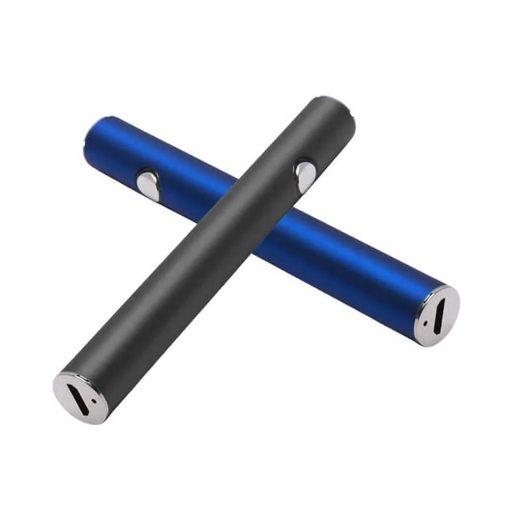
Proper cartridge attachment and priming
Attention should be paid to how the cartridge is attached and primed if you want a long-lasting performance and service from your Max Battery Vape Pen. First, screw the cartridge onto the battery gently, taking care not to overdo it. Overtightening can strip the threads or get in the way of electricity flowing through. Ensure the cartridge is locked in place to the collar fully for safe use.
If you are about to use the cartridge for the first time, dry hits need to be avoided, and to enable smooth vapor production, priming is critical. Let the Vape Pen sit upright with the cartridge on for around 5-10 minutes, allowing time for the Vape Juice to soak the coil. When setting the airflow for cartridges that have this feature, set it to mid-level for priming. If the device has a variable voltage setting, keep it low (around 2.8V to 3.2V) during initial use so the coil does not overheat when vaporized.
- Thread type: Check that the cartridge uses a standard 510-thread, which is accepted by most Max Battery Vape Pens.
- Voltage settings: For priming, start with 2.8V – 3.2V, then increase for better vapor management.
- Priming duration: Depending on the vape juice’s viscosity, allow 5-10 minutes for full coil saturation (higher VG liquids may take longer).
Doing this ensures that the device minimizes wear and provides an optimal vape experience.
Adjusting voltage settings for optimal flavor
I suggest starting with a lower voltage and increasing it until you reach your desired taste and vapor density. This is how I do it:
- Starting Voltage: 2.8V – 3.2V, so the coil can be fired up without burning the wick.
- Flavor Calibration: Increase the voltage in small increments (say, about 0.2V) until there is enough vapor produced, The taste of the e-liquid should be the main focus . In general, voltages of 3.5V – 4.2V seem to increase the density of vapor produced, but do tend to lose some of the subtle taste elements.
- Cartridge Specification: Always check the manufacturer’s specification of the recommended voltage range for your cartridge or coil type. As an example, ceramic coils compared to cotton wicks can absorb more heat.
These steps guarantee that coil will still work and keeps most of the flavor intact. This means taking steps systemically helps in protecting the device and tailoring the vaping experience to a person’s liking.
Preheat function and when to use it
The drum coil is heated together with the material (concentrates or oils) to its optimal temperature before full activation. This function is important for thicker, more viscous materials that require an initial boost of heat to vaporize efficiently. The preheat function also allows for more consistent vapor production and lessens the chance of overheating and burnt flavors.
- Voltage Range: Preheat works between 1.0V and 2.0V. This setting varies depending on the device and material type and is preferred because it reduces excess heat.
- Duration: Most devices enable preheat between 5–15 seconds. This is long enough to warm materials without them degrading.
- Material Compatibility: Ideal for concentrates with high viscosity as waxy or thick oils, where standard heating might struggle to produce vapor, are far more effortless.
Utilization of the preheat function is suggested in colder climates, with highly viscous materials, or when the device has been idle for an extended period. Proper utilization increases functionality and device longevity while smoother, more satisfying vapor results.
How to troubleshoot common Max Battery Vape Pen issues?
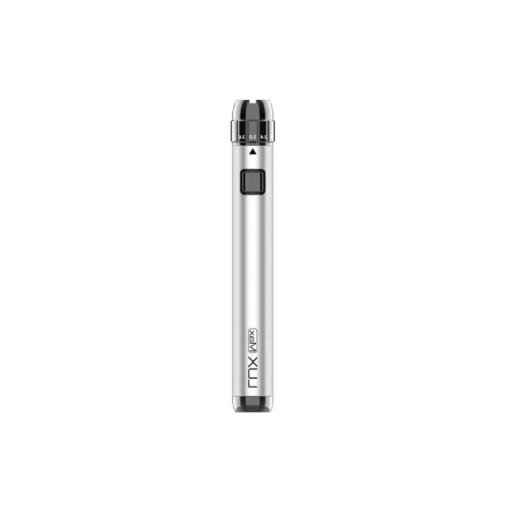
Dealing with connection problems
To troubleshoot connection issues on a Max Battery Vape Pen, start with cleaning the threads of the cartridge and battery to remove any sticky residue. Residue buildup can obstruct the electric connection. Clean the contact points using a cotton bud with isopropyl alcohol and let it dry completely.
Afterwards, make sure that the battery and cartridge do not over tighten. You could cross thread them or push the connection pin too deep which would lead to misalignment. Maximum performance is achieved when the tightening is snug, but not too tight.
If the device allows for battery voltage settings to be adjusted, check those settings. Most cartridges work well with a standard calibrated output range of 3.2V to 4.2V. The cartridge’s resistance coils will struggle, and overheating would risk burning the material if placed at too high of a setting. Placing it too low would almost guarantee insufficient heating.
Lastly, check that the device is turned on correctly. Button operated devices require a rapid five presses of the button five times to turn on. If the problem persists, check for manufacturing defects, or reach out to customer service for further assistance.
Resolving battery life concerns
A device’s capacity and usage patterns must be checked first to address battery concerns. Battery capacity is measured in milliampere hours (mAh), with higher mAh values indicating longer usable time. For example, a 300mAh battery may last approximately 6-8 hours in moderate use. This greatly varies depending on factors such as resistance measured in ohms and output voltage.
If the battery dies faster than expected, inspect the output settings on the device. High wattage or voltage settings, such as anything above 3.7 V, greatly increase the chance of acceleration on battery discharge rates, especially when coupled with low resistance coils set at .5-1.0 ohms. To optimize battery use, increase resistance while ensuring the coil is not below the range for your device. Also, rapid cycling the device on and off, as well as heavy use of the button functions, may greatly increase battery depletion.
To ensure battery life longevity while not in use, the battery should not be exposed to extreme temperatures below 30F (-1C) or above 104F (40C). This can greatly affect the overall battery capacity. Always ensure that good quality charging accessories are being utilized to prevent current surges when the device is being charged. While charging peripherals typically supply power anywhere between 1-2A, a device that is too portable may fluctuate greatly. Batteries should be calibrated periodically to avoid charging the device while it is in poor perimeters, so make sure the battery is not drained nor fully charged to avoid trimester performance.
In these circumstances, ensure you check the battery terminals for any corrosion to the physically damaged components. A faulty internal cell or circuitry may require the whole part to be replaced. In this instance, contacting the manufacturer directly or through an authorized service provider is best.
Addressing unusual tastes or vapor production
The odd tastes or irregular vapor production of electronic devices like vaping systems can be traced to different technical aspects. Start with the coil and wick system inspection. A burnt or heavily used coil will taste burnt and reduce vapor output. Depending on the frequency of operations, changing the coil after consistent use for 1 to 2 weeks is common. In addition, check to make sure the wick is properly saturated with liquid to eliminate dry hits, which will ruin both the taste and the vapor quality.
Regarding technical aspects, verify that the device is running in the proper recommended wattage range. Too high of a wattage burns the coil too quickly. Most devices specify a most effective range, such as 15W-25W, and going over these ranges can directly reduce performance. Additionally, check the liquid’s ease of flowing, ranging VG/PG ratios like 70VG/30PG or vice versa. The wrong ratios could disrupt optimal wicking or vapor outtake.
Finally, keeping the airflow vents clean is as important. Blockages or debris in the vents can cut off airflow which reduces both vapor output and taste clarity. It is recommended to regularly and thoroughly clean these parts to ensure maximum performance.
What maintenance is required for a Max Battery Vape Pen?
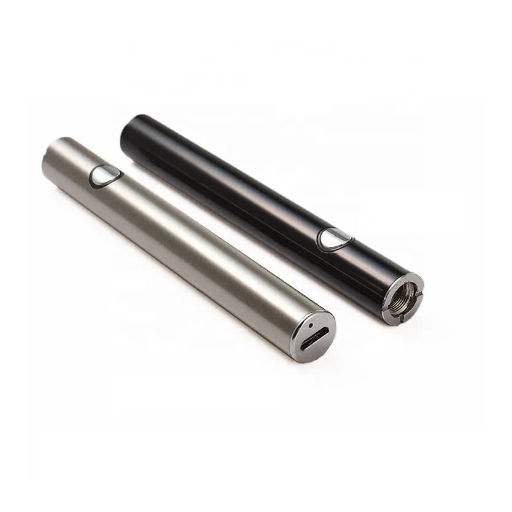
Cleaning and storage tips
Cleaning and storage are crucial to effective maintenance of the Max Battery Vape Pen. Start by disassembling the device cautiously, removing and wiping the exterior parts with a soft microfibre cloth to clean any marks or smudges. For internal sections which include the connection points or charging ports, use a cotton swab dipped in isopropyl alcohol (a minimum 70% concentration) for proper electrical conduction and to avert corrosion.
When not in use, the device should be stored away from direct sunlight and excessive dampness, which may damage the battery and circuitry performance. Keeping it in a warm, moist environment is also detrimental. Do not store the device at extreme temperatures – the optimal range for storage is between 15°C and 25°C (59°F to 77°F), which will enhance the longevity and functionality of the lithium-ion battery.
For longer periods of dormancy, make sure to charge the battery to around 40%-60% to minimize damage potential from over-discharge or overcharge. And when charging the device, always use the endorsed chargers. Damaged or non-compatible chargers might provide excessive voltage or current, which could rent the battery prone to overheating or malfunctioning. Following this guidance will assure excellent performance and increase the lifespan of the device.
When and how to replace coils or cartridges
Coils or cartridges need to be replaced when there is a notable decline in vapor production, performance becomes inconsistent, or a burnt taste is felt. Moreover, if any visible degradation of the coil or wick is noticed, that is an indicator, too. These signs show that the component has reached the end of its functionality, on average between 1 to 2 weeks of normal usage, depending on power settings and e-liquid composition.
- Power Off the Device: To ensure that the device does not turn on accidentally, make sure it is switched off while performing any of the tasks.
- Disassemble the Tank or Cartridge System: Following the manufacturer’s guidelines, cautiously take out the tank or cartridge from the device.
- Unscrew the Old Coil: In systems that have coils as a replaceable part, old coil can unscrewed from the base. To confirm if the old coil needs to be replaced, check for residue buildup or any damages.
- Prime the New Coil or Cartridge: For the new coil, drip a few drops of e-liquid on the exposed wick or cotton to saturate it. Priming is important to prevent dry hits or burning.
- Install the New Component: The replacement cartridge can be inserted while the new coil should be screwed in securely.
- Reassemble and Fill: Reattach the cartridge or tank, fill it with e-liquid, allow it to sit for 5 to 10 minutes, and then start using it. Waiting allows for complete saturation,n which clears any impediments for optimal performance.
Regularly replacing the coils or cartridges in association with these recommendations will assure proper device operation for an extending period of time while avoiding any possible malfunctions.
Are there any safety concerns when using a Max Battery Vape Pen?
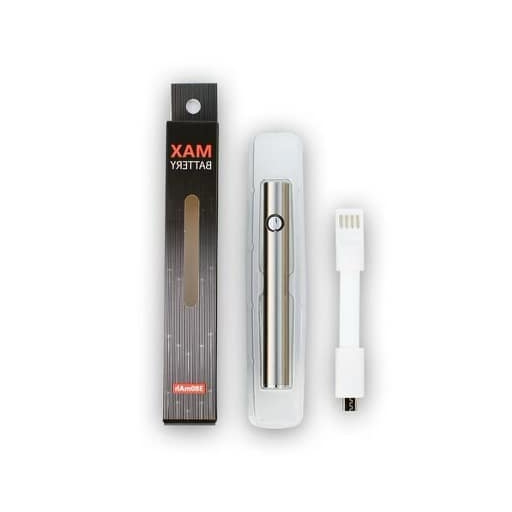
Battery safety and handling precautions
Regardless of the situation, guidelines for enhanced safety must always be put into practice with a Max Battery Vape Pen. This includes refraining from exposing the battery to extreme temperatures. Standard operation of most lithium-ion batteries is between a frigid 32 degrees and boiling 104 degrees Fahrenheit. Any temperature outside the given range could potentially lead to failure of capacity.
Only using the charger offered by the manufacturer prevents over discharging or damaging the vape pen. With the provided charger, specification output should always be met with the device rated input; failing to follow this would be disastrous. Unfortunately, any spec outside 5V/1A warning will lead the device towards overheating or battery degradation.
The battery should never be charged to full capacity, and draining it completely leaves a detrimental effect as well. Protecting a battery from overuse should automatically be built in with every device. Strangely enough, built-in protections still have to be negative if charging and usage patterns are not monitored.
Lastly, I check the battery and its terminals for any physical damage like swelling, dents, or leakage. Having identified these problems, I ceased using the device at once and replaced the battery with one from a reputable supplier. Keeping it in a cool and dry place using designated battery cases guarantees safe use. These precautions help to prolong the safe functioning of my Max Battery Vape Pen.
Proper disposal of used batteries and cartridges
In the disposal of used batteries and cartridges, there is an eco-friendly approach I undertake to lessen damage. As for used batteries, I make sure that the used batteries are brought to recycling centers that deal with lithium-ion battery recycling. These batteries come with dangerous waste of their own, such as lithium, cobalt, and nickel, which should all be extracted and processed properly to avoid soil and water contamination. Batteries that are partially charged at about 30% have guidelines that suggest they come with less risk of dangerous incidents during disposal, so I make it a point to partially discharge them before recycling.
When it comes to cartridges, I make sure before disposal that the cartridges are free from any residues or spills that might cause leakage. In the case that the cartridge is made of either plastic or metal, I separate it according to its material type and dispose of it at the nearby recycling bins set for those materials. I will never toss both batteries and cartridges in the ordinary trash as they come with their own set of dangers when it comes to the environment and are violations in my local waste management directions.
With these practices, I personally come up with actions that have logic to them such as following the proper disposal procedures in order to eliminate waste as well as prevent dangerous events happening to the environment.
How does the Max Battery Vape Pen compare to other vaping devices?
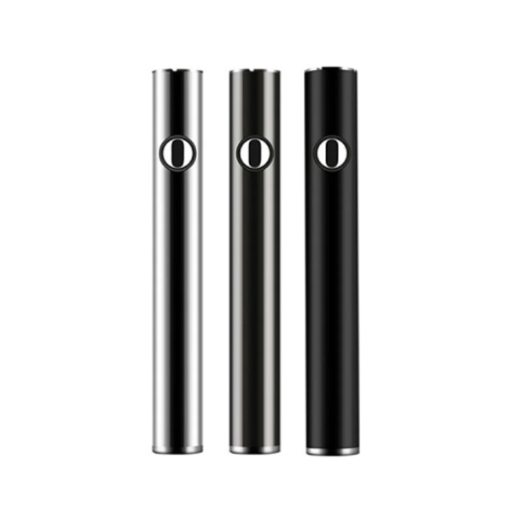
Advantages over disposable vape pens
The Max Battery Vape Pen outperforms disposable vape pens in sustainability, cost, and efficiency. Unlike disposable vape pens that contribute to environmental waste, the Max Battery Vape Pen is not a time use product and is built for reusability, which minimizes its carbon footprint. Unsurprisingly, reusable devices are more eco-friendly because they don’t require throwing away their used counterparts.
When measuring performance compared to disposable, the Max Battery Vape Pen still stands out in comparison. It contains higher rechargeable batteries compared to vape disposables, which use on average 280mAh – 400mAh. The vape also comes fitted with a larger 500 to 1000mAh battery. This design allows for extended use without the constant need to charge. Additionally, the voltage output can be customized, allowing the user to adjust it anywhere in between 3.2-4.2V. This much power customization allows for maximum user comfort.
Unlike prefilled disposable vape pens, the Max Battery Vape Pen is compatible with an unlimited number of refillable cartridges. This feature not only saves money in the long run but increases utility options as well. Users are also exposed to greater e-liquid flavors or formulas allowing unparalleled vaping experiences.
Lastly, the design quality of the Max Battery Vape Pen is superior to that of disposable versions as it makes use of long-lasting materials like aluminum alloy or reinforced plastic. This helps improve the lifespan of the device and guarantees more dependable performance under normal use circumstances. Altogether, these considerations make the Max Battery Vape Pen an ideal purchase for vaping aficionados who look for performance alongside sustainability.
Comparison with higher capacity vape batteries
There are several factors, such as performance, portability, and usability, that need to be taken into account when putting into perspective the efficiency of the Max Battery Vape Pen against other higher capacity vape batteries. Higher-capacity batteries usually have increased usage times courtesy of their larger ratings of milliampere-hour (mAh), which can range from 1500mAh to 3000mAh or more, depending on the model. This is a helpful feature for heavier or frequent users as these users require long vaping sessions without needing to recharge the device often. These benefits usually come with a cost, such as added size and weight, which makes these devices harder to carry around or less discreet.
The Max Battery Vape Pen with its moderate capacity like 650mAh to 900mAh, is an in-between device that seeks to solve both issues, convenience and performance. Users who prioritize being compact and convenience are best suited for this device, as this design would fit their need ideal. Smaller batteries have shorter recharge times as well, which is something users who value accessibility in their vaping devices will greatly appreciate.
More advanced batteries can have sophisticated options such as variable wattage and temperature control, providing a more customized approach to vaping. However, this may be irrelevant for users who value ease of use. The Max Battery Vape Pen is easy to operate and provides voltage power for most refillable and standard cartridges, making it an excellent pick for novice and casual vaporers.
- Capacity (mAh): The Max Battery Vape Pen’s capacity is between 650mAh–900mAh; Some advanced batteries can be over 1500mAh.
- Portability: Max Battery does well with compact and lightweight designs; those advanced ones are more cumbersome.
- Recharge time: With lower capacity, Max Battery takes less time to recharge; higher capacity variants tend to take longer.
- Compatibility: Works with the standard 510-thread cartridges; those advanced models tend to be more fiduciary but lose in size.
- Voltage Range: It can be adjusted from 3.2V–4.2V; this range is adequate for moderate vaping.
In summary, deciding between the Max Battery Vape Pen and more advanced ones comes down to whether the user favors ease of use and portability or longer battery life and more features.
Reference sources
Construction of electronic cigarettes
Frequently Asked Questions (FAQs)
Q: How do I charge my Max Vape Pen Battery?
A: To charge your 380mah Max Vape Pen Battery, connect the included micro-USB charging cable to the battery and plug it into a power source. The light on the battery will indicate when it’s fully charged. Typically, it takes about 1-2 hours for a complete charge.
Q: How do I turn on the Max Vape Pen Battery?
A: To turn on your Max Vape Pen Battery, press the button 5 times quickly. The battery will blink to indicate it’s activated. To turn it off, repeat the same process of pressing the button 5 times.
Q: What types of cartridges are compatible with the Max Vape Pen Battery?
A: The Max Vape Pen Battery is designed with a 510 thread, making it compatible with most oil cartridges on the market, including CBD and cannabis cartridges. It works well with standard 510 cartridges for a variety of vaping experiences.
Q: How do I use the adjustable voltage feature on my Max Vape Pen Battery?
A: The Max Vape Pen Battery offers three voltage levels. To switch between them, press the button 3 times quickly. Each voltage level is typically indicated by a different light color. Lower voltage is ideal for preserving flavor, while higher voltage produces bigger clouds.
Q: What should I do if my Max Vape Pen Battery isn’t working?
A: If you’re having issues with your Max Vape Pen Battery, first ensure it’s fully charged. If the problem persists, try cleaning the connection points between the battery and the cartridge. If you still can’t get it to work, it may be time to replace the coil or contact us for further assistance.
Q: How long does the 380 mAh battery last?
A: The 380 mAh battery in the Max Vape Pen typically lasts for a full day of moderate use. However, battery life can vary depending on factors such as voltage setting, frequency of use, and the type of cartridge being used.
Q: Does the Max Vape Pen Battery have a pre-heat function?
A: Yes, many Max Vape Pen Battery models come with a pre-heat function. To activate it, you usually need to press the button twice quickly. This feature warms up your oil before vaping, providing a smoother hit and better flavor.
Q: How do I know when it’s time to replace my Max Vape Pen Battery?
A: It may be time to replace your Max Vape Pen Battery if you notice significantly reduced battery life, if it’s not holding a charge, or if it’s not powering on at all. Most vape pen batteries last several months to a year with proper care and usage.
Q: Can I use the Max Vape Pen Battery for dab or concentrate vaping?
A: While the Max Vape Pen Battery is primarily designed for oil cartridges, some models may be compatible with certain concentrate atomizers. However, for the best dab or concentrate vaping experience, it’s recommended to use a device specifically designed for that purpose.







